The aroma of freshly ground beans. The gentle hum of conversation. The artistic swirl of foam atop a perfectly pulled espresso. Behind every charming coffee shop that captures your heart lies something far less romantic but infinitely more powerful—a meticulously crafted business plan.
Café ownership sits at that delicious intersection where passion meets commerce. While your love for the perfect pour-over might be what wakes you up in the morning, strategic planning for your coffee business will keep your doors open when the honeymoon period fades.
Think of your coffee shop business plan not as paperwork but as the recipe for your success story. Just as you wouldn’t eyeball measurements for your signature pastry, launching without a comprehensive business concept and roadmap leaves far too much to chance in an industry where margins are tight and competition is fierce.
Whether you’re a barista ready to break out on your own or an entrepreneur seeing opportunity in coffee culture, this guide will walk you through transforming caffeine-fueled dreams into a thriving enterprise that stands the test of time—where the only thing bolder than your coffee is your vision for success.
Understanding the Purpose of a Coffee Shop Business Plan

A coffee shop business plan lays the groundwork for everything—operations, funding, marketing, and daily decisions. This section will walk you through the purpose and real-world advantages of having a detailed coffee shop business plan.
The Strategic Power of Planning
A business plan is more than a document—it’s your operational compass. It ensures that every action you take is tied to a bigger goal.
Writing down your goals turns intention into direction. A business plan aligns ideas with implementation.
Details:
- Guides day-to-day decisions and long-term objectives.
- Feasibility analysis: Determines if your concept is practical in a given market.
- Operational roadmap: Helps plan staffing, sourcing, and budgeting.
- Financial planning: Clarifies investment needs and profit timelines.
- Investor pitch: Increases credibility with banks, VCs, or angel investors.
A clear plan minimizes guesswork, increases your confidence, and helps attract funding. It’s the smartest first step.
Defining Your Cafe Concept

Your cafe’s concept is its soul. It determines who walks through your door, what they order, and why they come back. This section will help you shape a compelling brand identity.
Crafting a Distinct Identity
A well-defined concept brings cohesion to your branding, menu, and ambiance.
Without a distinct concept, your cafe risks blending in. A great concept tells a story that customers want to be a part of, setting you apart from other coffee shops .
Details:
- Ask: What is your theme, and who are you serving?
- Options include:
- Pet-Friendly Cafes: Attracts animal lovers.
- Sustainable Cafes: Focuses on zero waste and local sourcing.
- Themed Cafes: Creates immersive spaces (e.g., book cafes, art lounges).
- Health Cafes: Offers superfoods and allergen-free menus.
- Reflect your values and market demand.
Your concept becomes the reason customers choose you over others. Make it bold, consistent, and market-ready.
Conducting Market Research

Market research gives your cafe an edge by offering insights into customer preferences, like what local coffee addicts want, competitor strategies, and market gaps.
Know the Terrain Before You Build
Without data, you’re guessing. Research helps align your offerings with real demand.
Many cafes fail because they don’t study their audience. Market research validates your concept and shapes your services, contributing to a successful business .
Details:
- Define your target audience: Demographics, income levels, eating habits.
- Study competitors: Menu design, service style, pricing, and reviews.
- Follow industry trends: Cold brews, digital ordering, plant-based options.
- Tools: Google Trends, local surveys, footfall counters.
Research ensures you’re building what people want—not what you think they want.
Choosing the Right Location

The location can determine your cafe’s visibility, foot traffic, and revenue. Choose strategically, not emotionally.
A Good Location Is Half the Battle
Location affects customer access, perception, and sales volume.
A beautiful cafe in a poorly located spot won’t thrive. Great ideas need the right setting to flourish.
Details:
- Foot Traffic: More people = more potential customers.
- Demographic Match: Place your vegan cafe near gyms or co-working hubs.
- Accessibility: Ensure parking, signage, and ease of access.
- Rental Cost vs. Returns: Don’t blow your budget on location alone.
Think like a customer—pick a spot you’d love to discover again and again.
Business Structure and Licensing

Your legal structure affects liability, taxes, and growth potential. Licensing ensures compliance and protects you legally.
Build on a Legitimate Foundation
Structure and licensing are often overlooked but can make or break your startup. Get the paperwork right before you serve your first cup.
Details:
- Structures:
- Sole Proprietorship: Easy, but high risk.
- Partnership: Share capital and responsibilities.
- LLP/Pvt Ltd: Safer, fundable, and scalable.
- Licenses You’ll Need:
- FSSAI
- GST
- Fire Department clearance
- Local trade license
- Music license (if applicable)
A compliant business attracts trust from customers and investors alike. Don’t skip this step.
Creating a Strong Brand Identity

Your brand identity helps shape customer perception and emotional connection.
From Logo to Loyalty
Your brand is the face and voice of your cafe. A strong brand evokes a feeling that brings customers back. It’s more than visuals—it’s your message.
Details:
- Elements:
- Logo and name
- Color scheme and typography
- Voice and messaging
- Packaging and uniforms
- Align all branding with your concept.
When branding is consistent and compelling, your cafe becomes memorable. It transforms customers into ambassadors.
Developing Your Menu

Your menu defines your offerings, pricing strategy, and customer experience.
Designing a Menu That Sells
A smart menu balances creativity, cost-efficiency, and brand alignment. Every dish or drink should add value—to your customers and your bottom line.
Details:
- Focus on your USP: Signature drinks or dishes.
- Menu: Keep the menu short, strategic, and scalable.
- Things to Consider: Factor in food cost, pricing, and preparation time.
- Offer dietary flexibility: Vegan, gluten-free, sugar-free.
A thoughtful menu isn’t just about food—it’s a business tool for revenue and brand building.
Interior Design and Layout
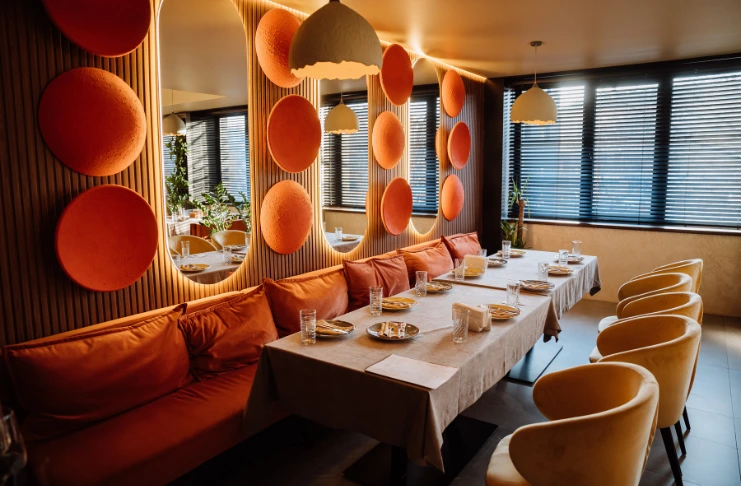
Your design affects both customer satisfaction and operational flow.
A Space That Serves and Sells
Design goes beyond aesthetics—it defines customer behavior. Great interiors make people stay longer, spend more, and post online.
Details:
- Sync the decor with your concept.
- Plan efficient kitchen-to-table layouts.
- Create zones for solo diners, groups, and quick bites.
- Add Instagram-worthy corners.
Interiors set the mood and turn your space into an experience—not just a cafe.
Choosing the Right Equipment

Equipment influences efficiency, safety, and taste consistency.
Invest Smart, Not Just Big
The right tools make work smoother and quality consistent. Don’t just buy the best—buy what best fits your needs.
Details:
- Must-haves:
- Espresso machine
- Coffee grinder
- Refrigerator
- POS system
- Water purifier
- Choose commercial-grade gear with maintenance plans.
Equipment is a long-term investment. Quality here saves money later.
Hiring and Training Staff

Staff are the face of your cafe. Their skill and attitude drive reviews and returns.
Build a Team That Breathes Your Brand
A passionate team elevates the entire experience. Your service quality depends on your people. Hire for attitude, train for skill.
Details:
- Roles to fill: Baristas, servers, chef, manager.
- Train on:
- SOPs
- Hygiene and food safety
- Upselling and feedback handling
When your staff grows, your business grows. Prioritize team culture.
Marketing Strategy

Marketing draws people in—and keeps them coming back to a successful coffee shop .
Be Seen, Heard, and Remembered
No matter how good your coffee is, you need people to know about it. Visibility creates viability. Marketing must be consistent and creative.
Details:
- Offline: Flyers, opening events, partnerships.
- Online: Social media, email, influencer tie-ups.
- Build a content calendar.
Marketing is a dialogue—keep it authentic, and the customers will follow.
Financial Planning and Budgeting
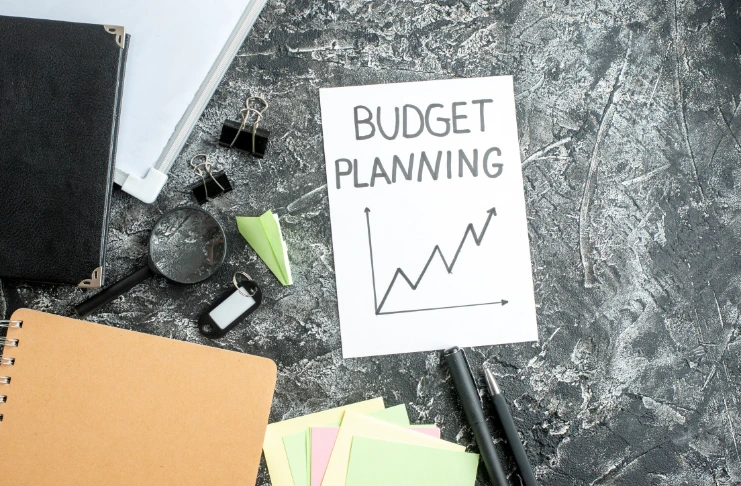
Your budget is your map—it shows where your money comes from and where it’s going.
Numbers That Keep You in Business
Track every rupee to stay sustainable. Cafes run on passion, but they survive on numbers.
Details:
- Plan for:
- Setup Costs: $80,000–$300,000 (equipment, licenses, interior)
- Rent: $2,000–$10,000/month depending on location
- Staff Wages: Average $10–$18/hour (BLS, 2023)
- Marketing Budget: 10–15% of monthly revenue
- Contingency Fund: 10–20% of total setup cost
- Use budgeting software or hire an accountant.
Smart financial planning helps to avoid surprises and ensures long-term growth.
Securing funding
Securing funding for your café is a pivotal step in transforming your vision into reality. Here are several strategies to help you raise the necessary capital:
1. Self-Funding (Bootstrapping): Utilize personal savings or assets to finance your café. This approach allows you to maintain full control and avoid debt. However, it requires sufficient personal funds and involves financial risk.
2. Friends and Family: Consider borrowing from or partnering with friends and family who believe in your vision. Ensure clear agreements are in place to prevent misunderstandings.
3. Crowdfunding: Platforms like Kickstarter, Indiegogo, and GoFundMe allow you to present your café concept to a broad audience, securing small investments or pre-orders in exchange for rewards.
4. Small Business Loans: Traditional bank loans or Small Business Administration (SBA) loans can provide substantial funding. A comprehensive business plan and good credit history are essential for this route.
5. Angel Investors: Seek out individuals who invest in startups in exchange for equity. Platforms like Wellfound can connect you with potential investors interested in the food and beverage industry.
6. Venture Capitalists: While less common for cafés, venture capital may be an option if your business model is highly scalable or innovative. Be prepared to present a compelling case for significant growth potential.
7. Restaurant Incubators: Participate in programs that offer funding, mentorship, and resources tailored to food service startups. These incubators can provide invaluable support and networking opportunities.
8. Community Development Financial Institutions (CDFIs): CDFIs specialize in lending to businesses in underserved communities. They often offer favorable terms and are more flexible than traditional banks.
INDUSTRY INSIGHTS
As of April 2025, several notable developments and statistics have emerged regarding Community Development Financial Institutions (CDFIs) and small business lending in the United States:
| Between 2011 and 2025, the number of certified CDFI credit unions increased by 134% nationally. The most significant two-year growth occurred from 2021 to 2023, with a 49% national increase. This surge is attributed to factors such as reduced trust in traditional banks following the Great Recession and support from organizations like Inclusiv, which assist credit unions in obtaining CDFI certification.The global small business lending market is projected to reach $7.22 trillion by 2032, growing at a compound annual growth rate (CAGR) of 13%. In the U.S., Small Business Administration (SBA) loan approvals in 2024 totaled $31.1 billion across over 70,000 loans, reflecting a 13% increase in total value and a 22% increase in the number of approved loans compared to 2023.In 2023, Native CDFIs were 25 percentage points more likely than non-Native CDFIs to report increased demand for their financial services over the previous 12 months. However, they were also 12 percentage points less likely to fully meet this demand, indicating capacity challenges. |
9. Online Lending Platforms: Explore alternative lenders like Biz2Credit that cater to small businesses seeking quick access to capital.
10. Partnerships: Form strategic partnerships with individuals or businesses that complement your café’s vision. This can include local suppliers, artists, or other entrepreneurs.
Preparing to Approach Investors:
- Develop a Comprehensive Business Plan: Clearly outline your café’s concept, market analysis, revenue projections, and operational strategies.
- Create a Compelling Pitch Deck: Summarize your coffee shop business plan in an engaging presentation highlighting the unique aspects of your café and the potential return on investment.
- Build a Strong Brand Identity: Demonstrating a clear and appealing brand can make your café more attractive to potential investors.
- Leverage Your Network: Attend industry events, join local business associations, and utilize platforms like LinkedIn to connect with potential investors.
- Consider a Pop-Up or Market Stall: Showcasing your concept on a smaller scale can generate interest and prove the viability of your business idea.
Remember, each funding source comes with its own set of advantages and considerations. Assess your business needs, risk tolerance, and long-term goals to determine the best fit for your café.
Operations Plan
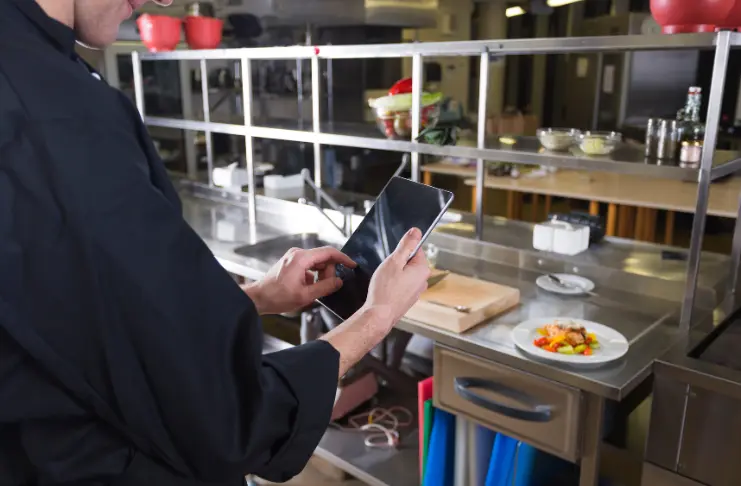
An operations plan details your daily workflow.
Systems Create Success
Efficient operations save time, money, and stress. Chaos in the kitchen equals poor service. Systems keep things smooth.
Details:
- Vendor and stock management
- Daily SOPs
- Cleanliness protocols
- Scheduling and reporting
Operational excellence ensures consistent customer experiences.
Revenue Streams
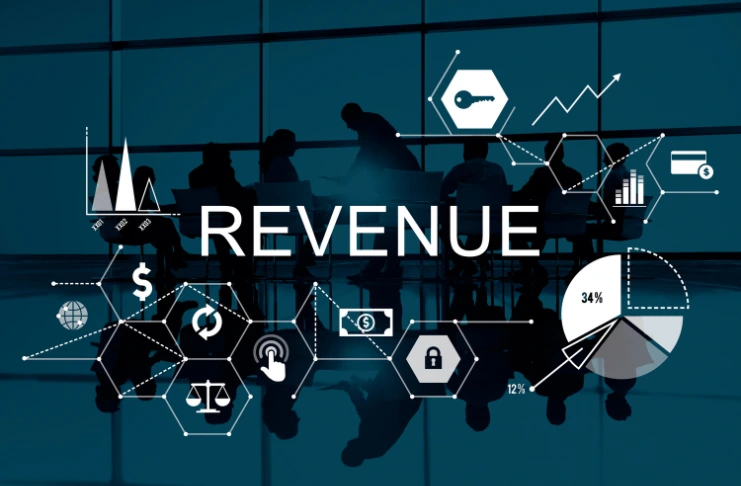
A modern cafe thrives on multiple income avenues beyond just serving coffee. Diversifying your revenue streams not only boosts profits but also protects your business during off-peak seasons or economic downturns.
Key Revenue Channels to Explore:
- In-House Sales: Your primary source of income—coffee, pastries, sandwiches, smoothies, and other beverages.
- Merchandise: Branded mugs, tumblers, tote bags, and apparel create brand recall and offer excellent profit margins (average 30–50%).
- Retail Beans & Home Brewing Kits: Selling your signature blends as whole beans or grind-to-order bags is a powerful way to engage customers even outside your shop.
- Online Subscriptions: Deliver beans, cold brew concentrate, or curated boxes to customers monthly. The global coffee subscription market is projected to reach $74.3 billion in 2025.
- Events & Workshops: Hosting barista classes, coffee tastings, or live music events brings in additional income and builds a loyal community.
- Corporate Catering & Partnerships: Supplying coffee for offices and coworking spaces or partnering with local bakeries and hotels.
- Delivery & Takeout: Especially vital post-COVID, partnering with DoorDash, Uber Eats, or Grubhub can increase sales by 20–40%.
Diversification not only buffers risk but also unlocks exponential growth.
Technology Integration
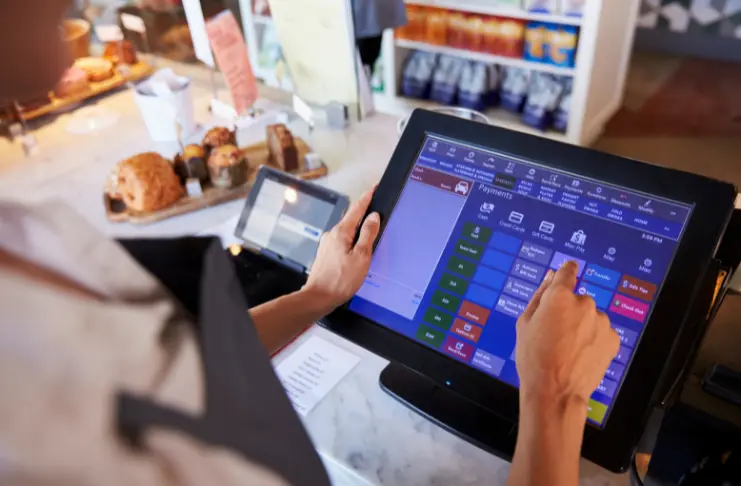
Tech tools enhance efficiency and customer experience while also helping to manage your operating expenses .
Tech That Transforms
Adopting tech can simplify operations and expand your reach. Modern cafes need modern solutions. Tech saves time and scales service.
Details:
- POS Systems (Point-of-Sale): Platforms like Posist handle orders, tips, customer data, and inventory. Some even integrate loyalty programs and real-time analytics.
- Inventory Management Software: Use tools to automate stock tracking, reorder supplies, and reduce waste.
- Mobile Ordering & Loyalty Apps: Starbucks revolutionized this model. Cafes using apps for mobile orders report a 20%+ increase in order frequency and average ticket size.
- CRM & Email Marketing Tools: Platforms help you stay in touch with customers, send offers, and get feedback.
- Contactless Payment & QR Menus: Fast, hygienic, and now expected by most customers.
The right tools can make a small management team work like a big one.
Sustainability Practices

Sustainability attracts conscious customers and lowers waste.
Serve Coffee, Save the Planet
Eco-practices are good ethics and good business. Going green isn’t a trend—it’s a responsibility.
Details:
- Compostable packaging
- Reusable discounts
- Local sourcing
- Waste segregation
Sustainable cafes build a loyal, value-aligned customer base.
Risk Management

Risks are inevitable. Preparedness is optional—but smart.
Plan for the Worst, Serve at Your Best
Mitigating risk ensures your cafe can survive shocks. A fire, illness, or supplier issue shouldn’t shut you down.
Details:
- Business insurance
- Backup vendors
- Safety drills
- Emergency fund
Being proactive means you’re never paralyzed by problems.
Monitoring & Growth Metrics

Growth comes from reflection and refinement.
Data-Driven Decisions Win
Track what matters to scale what works. Numbers tell the real story. Let them guide your next move.
Details:
- Monitor footfall, sales, menu popularity
- Track social media reach
- Conduct staff and customer feedback sessions
Improvement isn’t luck—it’s measurement plus action.
Scaling Up Your Cafe Business

Once your cafe stabilizes, scale for impact and income.
Grow Without Breaking the System
Expansion requires strategy, not just ambition. Scaling isn’t just opening more branches—it’s optimizing every process first.
Details:
- New locations
- Franchising
- Online stores
- Delivery-only kitchens
Scale only what works—and keep your quality intact while doing it.
Cafe Success Stories
1. Stumptown Coffee Roasters (Portland, OR)
Founded in 1999, focused on direct trade. By investing in quality and brand storytelling, it gained national attention and was later acquired by Peet’s Coffee.
2. Blue Bottle Coffee (Oakland, CA)
James Freeman started it as a garage-based roastery in 2002. Emphasized freshness and minimalism. Raised a huge amount and also got acquired by Nestlé in 2017.
3. Joe Coffee Company (NYC, NY)
Launched in 2003 as a neighborhood cafe. Known for barista training and premium beans. Now, it has 20+ locations and online subscription offerings.
These success stories aren’t just about profit margins or brand acquisitions—they’re about vision, consistency, and community impact. From Stumptown’s unwavering focus on ethical sourcing to Blue Bottle’s obsession with freshness and Joe Coffee’s commitment to barista excellence, each of these brands carved a niche by staying authentic, innovative, and customer-obsessed.
They remind us that building a successful cafe isn’t about chasing trends but about creating meaningful rituals and experiences for your customers—one cup at a time. Whether it’s your approach to sourcing beans, training staff, or designing your space, the goal should always be to craft a brand that people remember, trust, and return to.
These cafes also illustrate how strategic decisions—like emphasizing direct trade, perfecting operations, scaling at the right time, or leveraging online subscriptions—can elevate a local shop into a national or even global phenomenon. Their journeys are a testament that even the smallest café can one day stand toe-to-toe with industry giants, provided it’s built with passion, insight, and a relentless drive to serve better.
So, as you draft your own coffee shop business plan, let these stories fuel your imagination and ground your strategy. Success is brewed slowly, but when done right, it’s deeply satisfying and profoundly impactful.
Conclusion
Just as the perfect espresso requires both science and soul, your café’s success story will unfold through that same powerful blend of passion and strategy. The coffee shop business plan you’ve crafted isn’t just paperwork filed away—it’s the living blueprint that transforms those morning inspirations into evening celebrations.
Remember that aroma of possibility we talked about? It’s still there, now backed by financial projections that make sense, marketing strategies that resonate, and operational plans that won’t leave you burned out before your first anniversary.
Your café has the potential to become more than just another spot for caffeine—it can be that magical third place in your community where ideas percolate alongside your signature brews. The journey from passionate coffee lover to successful café owner isn’t always smooth, but with your comprehensive roadmap in hand, you’re equipped to navigate the inevitable bumps without spilling your dreams.
So, take that final sip of preparation, and step confidently into the adventure ahead. After all, the most satisfying businesses, like the most memorable coffees, are crafted with intention, served with heart, where your restaurant dream comes true, and is enjoyed for years to come.
Frequently Asked Questions
1. How do I write a business plan for a restaurant?
To write a restaurant business plan, start with the concept, market research, target audience, menu, location, operations, financials, and marketing strategy.
2. What are the 7 things in a business plan?
7 things in a business plan are: Executive Summary, Business Description, Market Analysis, Organization & Management, Menu/Service, Marketing Plan, Financial Projections.
3. How do small restaurants make money?
Small restaurants make money through dine-in sales, takeout/delivery, catering, and upselling high-margin menu items like beverages and desserts.
4. What 5 things should a business plan include?
5 things a business plan should include are: Concept, Market Research, Operations, Marketing Plan, Financials.
5. How profitable is a cafe business?
In a cafe business, profit margins range between 10–20%, depending on location, menu pricing, and operational efficiency.
6. How do I attract customers to my cafe?
Use social media marketing, influencer collaborations, unique menu offerings, cozy ambiance, and loyalty programs to attract customers to your cafe.
7. Is cafe a good business to start?
Yes, if backed by a strong concept, solid planning, and market understanding, it offers steady demand and brand potential.
8. How profitable is a small cafe?
A small cafe can earn ₹50,000 to ₹2 lakhs monthly after 6–12 months, depending on costs, footfall, and pricing.
9. How do you write a business plan for a cafe shop?
Define your concept, target market, menu, location, structure, team, equipment, finances, and marketing channels.
10. How do I start planning for a cafe?
Research your market, define your concept, plan your budget, scout locations, and start building your business model.
11. Is a cafe a profitable business?
Yes, especially in urban areas, with strategic operations and a loyal customer base. Profitability increases over time.
12. What is the best business structure for a cafe?
For most, a Private Limited Company or LLP offers scalability, funding potential, and limited liability protection.





